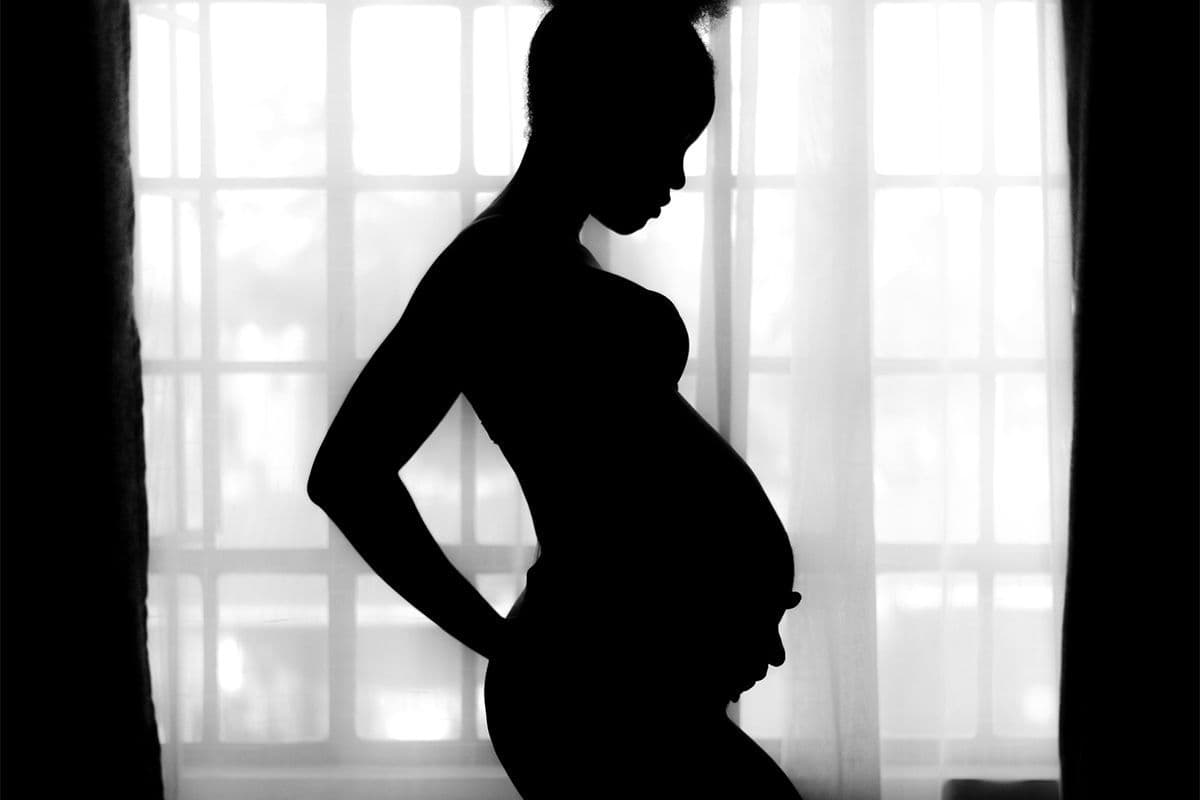Is It Safe To Eat Sushi During Pregnancy?
Pregnancy Safety
Obie Editorial Team

When people say that pregnant women should not eat sushi in pregnancy, they usually refer to sushi that contains raw fish. Sushi is not necessarily the same thing as raw fish. Most websites and many professional organizations say it's not safe to eat sushi in pregnancy. However, there is often a misunderstanding of what sushi is. Rather, raw fish, known as sashimi in Japanese, is the most popular ingredient in sushi. However, there are many other organizations that say it's safe to eat raw fish in pregnancy:
The British National Health Service NHS, an authority on health, states: "It's usually safe to eat sushi and other dishes made with raw fish when you're pregnant."
There is no conclusive evidence in the published literature that eating sushi during pregnancy has a major adverse effect on the pregnancy or that pregnant women have more or different complications after eating sushi. There are few, if any, published reports on an adverse association between sushi and bad pregnancy outcomes. In simple terms: There is no scientific evidence that sushi can do harm when eaten in pregnancy.
According to PubMed and Motherisk: "..it is no longer necessary for pregnant women to avoid … sushi and sashimi. Regardless of whether seafood is raw or cooked, pregnant women should choose low mercury seafood (eg, salmon and shrimp) over higher mercury varieties (eg, fresh tuna). Pregnant women should ensure that their food is obtained from reputable establishments; stored, handled, and cooked properly; and consumed within a couple of days of purchasing."
Before you go to an all-you-can-eat sushi bar, however, it's important to be informed about the benefits and risks of eating sushi and raw fish during pregnancy.
Is sushi or raw fish healthy?
Eating sushi and raw fish is part of a healthy diet during pregnancy as long as you eat fish with safe mercury levels. There is no scientific evidence that eating sushi during pregnancy increases pregnancy complications.
In Japan, sushi is considered very healthy in pregnancy and there are many who believe that the American "pregnancy sushi ban" is insulting to Japanese culture. Fish contains fish oil that is beneficial to the fetus' nervous system development.
Do people get sick from sushi or raw fish?
In general, people rarely get sick from eating sushi, but raw seafood is potentially risky because it can contain parasites such as tapeworm. Freezing and cooking kills most parasites, and many if not most Japanese restaurants in the US that specialize in sushi use frozen rather than fresh fish. You may want to ask your restaurant before ordering sushi if it has previously been frozen.
Parasitic worms and pregnancy
Occasionally, fish such as salmon may contain small parasitic worms, such as anisakis. Cooking the fish usually destroys the worm. If you eat raw or undercooked fish which may contain these worms then it can cause health problems that can happen to anyone, not just pregnant women.
Infection with these worms results in a condition known as anisakidosis (formerly known as anisakiasis or anisakiasis). Symptoms of anisakiasis include:
- severe abdominal pain
- nausea and vomiting
- diarrhea
Eating fish contaminated with anisakis can also cause an allergic reaction. Freezing raw wild fish kills any worms that may be present and makes it safer to eat.
Aniskaosis has also been found in people eating raw or marinated anchovies. Anchovies are traditionally processed and preserved in salt and brine which does not always destroy the worms.
Sushi and PCB chemicals
One concern about seafood, raw or cooked, is PCB and chemical contamination. If you want to eat fish during your pregnancy, contact your local health department or office of the Environmental Protection Agency (EPA) for a list of fish in your area that hasn't been contaminated with toxins. You may also want to avoid certain fish with higher mercury levels.
As a general rule, ocean fish such as tuna, sea bass, sole, flounder, and snapper are safer than river and lake varieties. When eating out, order your fish well cooked. Many upscale eateries lightly sear fresh fish on the outside and then serve it rare.
Keep in mind that in both the United States and Japan, many more people get sick from eating fish served at home than from eating fish at sushi restaurants.
Guidelines to cook fish
If you don't have a thermometer, the guidelines listed below can help you to determine whether seafood is done.
- Slip the point of a sharp knife into the flesh and pull aside. The edges should be opaque and the center slightly translucent with flakes beginning to separate.
- Let the fish stand three to four minutes to finish cooking.
- Shrimp and lobster turn red when cooked and the flesh becomes pearly opaque. Scallops appear milky white or opaque and firm.
- For clams, mussels, and oysters, watch for the point at which their shells open, which indicates that they're done. Throw out those that remain closed after cooking.
- When microwaving seafood, rotate the dish several times to ensure even cooking. After letting the dish stand, check seafood in several spots with a thermometer to see if it's reached the proper temperature.
According to the FDA's 1997 Food Code, you should cook most seafood to an internal temperature of 145 degrees Fahrenheit (63 degrees Celsius) for 15 seconds.
Food safety, in general, is a concern for the pregnant woman and the fetus, as they might be more susceptible to some food-borne illnesses. The main three food-borne pathogens of concern for pregnant women include
- Toxoplasma
- Listeria monocytogenes
- Salmonella enterica
These organisms can be passed to the fetus and increase the risk of spontaneous abortion, stillbirth, or perinatal complications. Recently, concerns have been raised especially in Europe about Listeria in raw or smoked fish.
Several factors have been cited that can lead to listeria contamination:
- food safety hygiene;
- storage conditions for the raw seafood from producer until preparation and before being eaten; and
- whether the raw seafood is prepared as sushi or sashimi.
It is safe to eat raw fish (e.g. sushi and sashimi) in moderation, and as long as precautions have been taken, although women should choose low mercury fish, such as salmon and shrimp, over higher mercury varieties, such as fresh tuna.
In Japan, pregnant women do not generally stop eating sushi when they become pregnant, and many Japanese pregnancy books suggest eating sushi as part of a healthy, low-fat diet during pregnancy. Japanese tradition has it that postpartum women get certain kinds of sushi in the hospital during their recovery.
However, in the United States, pregnant women are scared away from sushi by being told that raw fish can contain harmful bacteria and parasites. These warnings, however, often fail to mention the specific bacteria and parasites that fish may contain, nor do they mention that fish prepared at sushi restaurants in the United States is usually flash-frozen by the distributors before it gets to the restaurant, and any parasites or bacteria in the fish is usually killed off during the process.
Mercury and fish
There are certain fish that pregnant women should not eat because of increased mercury levels (raw or cooked).
Fish that should be avoided during pregnancy because of mercury levels include:
- Swordfish
- Mackerel
- Shark
- Tilefish
Tropical fish poisoning
Tropical fish poisoning happens when a person eats fish (either cooked or raw) which contains certain toxins. The most common form of fish poisoning is Ciguatera poisoning which causes up to one million cases of fish poisoning a year. Ciguatera fish toxin is widely distributed throughout the Carribean and South Pacific. It is caused by eating fish raw or cooked which have ingested a microalga called Giambierdiscus toxicus. Persons poisoned with Ciguatera have nausea, vomiting, abdominal pain, and other symptoms within 2-6 hours after eating the poisoned fish and there is no specific treatment. Other fish toxins include scombroid, tetrodotoxin, and saxitoxin which are among the rarest and most poisonest of them.
Between the warnings about parasites in sushi as well as mercury and toxins in certain species of fish, pregnant women are being scared away from eating fish altogether. This is potentially harmful since the fatty acids in fish are the ideal nourishment for a developing baby.
Read more here on fish and pregnancy.
Benefits and risks of fish during pregnancy
Fish is good for you, it's that simple. Not eating enough fish during pregnancy can have a negative effect on your baby's brain development.
But what about all the warnings about fish? Can't it make you sick? The National Academy of Sciences Institute of Medicine concluded in a 1991 report on illness from eating seafood: "Most seafood-associated illness is reported from consumers of raw bivalve mollusks...The majority of incidents are due to consumption of shellfish from fecally polluted water."
If you take raw and partly cooked shellfish out of the equation, the risk of falling ill from eating seafood is 1 in 2 million servings, according to a government calculation from some years ago. By comparison, the risk from eating chicken is 1 in 25,000. Overall, 76 million cases of food poisoning are reported each year.
The main risk of illness from non-mollusks isn't from eating them raw. Rather, as the Institute of Medicine reports, the problem is "cross-contamination of cooked by raw product," which is "usually associated with time/temperature abuse." In other words, no matter what you order in a restaurant, if it is not kept at a proper temperature and protected from contamination, you're at risk.
Sushi is a typical Japanese food with over a thousand years of history and tradition. It actually began as a way of preserving fish. The raw, cleaned fish was pressed between rice and salt by a heavy stone for a few weeks. Then, a lighter cover was used and a few months later it was considered ready to eat. Not until the 18th century did a chef decide to serve sushi in its present form as fresh fish and forget about the fermentation process altogether.
- Nigiri sushi is the traditional sushi which is a slice of fish (occasionally cooked) or shellfish pressed by hand onto a pad of cooked rice. Fish roe is also served as nigiri sushi in a style called gunkan, meaning "boat." Nigiri sushi contains a hint of horseradish and is meant to be dipped in soy sauce. They are always served in pairs.
- Maki sushi contains fish or other ingredients that are placed on rice and rolled with dried seaweed as an outer layer.
- Sashimi is thin or thick slices of raw fish that are not served on top of individual rice rolls, but separately.
- Temaki and Chirashi sushi are assorted raw fish and vegetables over rice
- Chakin Sushi is vinegared rice wrapped in a thin egg crepe hand-rolled cones made from dried seaweed
- Inari Sushi is vinegared rice and vegetables wrapped in a bag of fried tofu
- Oshi Sushi is Osaka-style sushi: squares of pressed rice topped with vinegared/cooked fish
- Oshinko are Japanese pickles
- Wasabi is Japanese horseradish (it's SPICY, watch out!
In the fishing and food industries, precautions are taken in the prevention of infected fish from getting into our food supply, but that is not a 100% guarantee. Food-borne illness is not limited to sushi or seafood but is a common concern of all food industries.
Between 1973 and 1987, shellfish accounted for 2.8% of the cases of food-borne illness reported to the Centers for Disease Control (CDC). These statistics may seem high at first glance, but they are somewhat misleading. For example, one in three cases of seafood-borne illness in the U.S. between 1977 and 1981 were attributed to ciguatera, a toxin found only in tropical and subtropical fish, and another 37% of the cases during the same time period were attributed to scombroid poisoning, a toxin produced in the flesh of some species of fish when improperly stored at high temperatures. Therefore, the statistics reported by the CDC are skewed by illnesses that either affect only a small geographical area or only occur with the mishandling of fish.
Uncooked meat or fish can potentially contain elements of worms or eggs, and the only way to fully kill worm eggs and other microorganisms is by fully and properly cooking fish and meats. Freezing fish will only kill mature parasitic worms. Illnesses that may develop from eating uncooked or undercooked fish or meats include hepatitis A, worms, parasites, viral intestinal disorders, and other diseases. In Japan there were a few reported cases of anisakidosis, a tiny worms in sushi that can cause gastrointestinal complications, but cases of anisakidosis are not commonly reported in the U.S. Pregnant or not, you should know that any time someone eats raw, uncooked, or improperly or inadequately cooked/handled seafood, there may be a problem.
Some have suggested that pregnant women should avoid any and all raw or undercooked meat, poultry, eggs and seafood (like sushi), as well as unpasteurized juice and milk, and soft cheeses, such as brie, feta and Camembert because these foods may contain bacteria that could be hazardous to you and your baby. But presently there are few cases of problems that justify generalizations.
If you want to be sure you won’t have a problem with raw fish, eat only well-cooked fish. You don’t have to completely give up on sushi and the safest way to enjoy sushi is to choose the fully cooked or vegetarian varieties, such as those that include cooked seafood. Here are some types of sushi that contain cooked or marinated fish or no fish at all:
- Ebi: Cooked jumbo shrimp. Anago is a saltwater eel that is precooked and then grilled before serving.
- Unagi: Fully cooked freshwater eel that is grilled and then brushed with a teriyaki-like sauce.
- Kani: Real crab meat and is always served cooked, but is sometimes cooked then frozen.
- Saba: Mackerel is always served after being salted and marinated for a few days, so in a sense, it is cooked.
- California roll: Contains avocado and other vegetarian ingredients.
- Kappa maki: Contains cucumbers.
Rest assured that overall, very few people in the United States get sick from eating sushi, and most infections occur from fish eaten at home, not from restaurants. You're much more likely to buy contaminated fish at your local supermarket than get it at a good Japanese restaurant.
Read More












